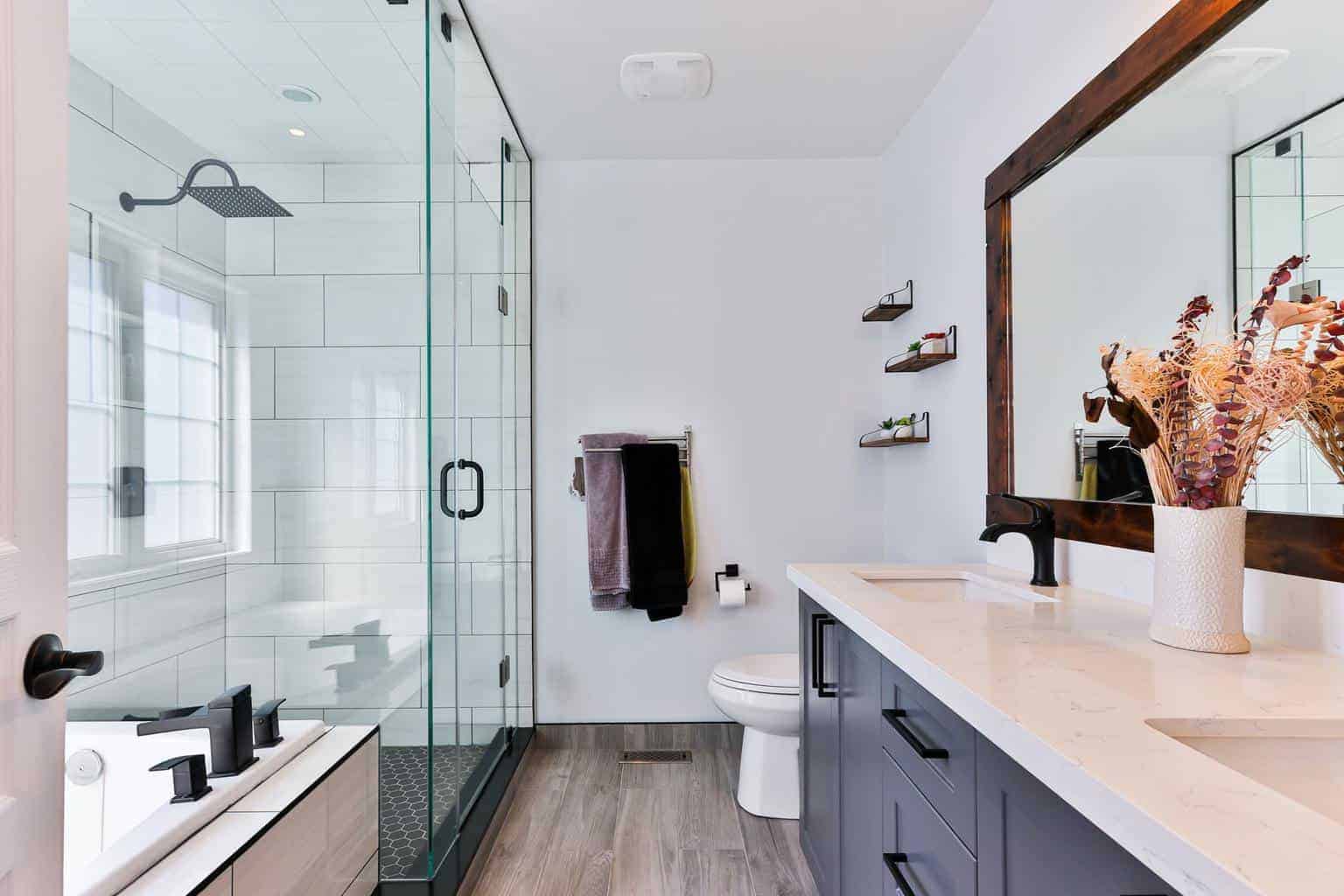Are you planning to renovate your home soon? A renovation mortgage loan could be a viable option if you’re seeking ways to fund home improvements. Keep reading to learn more about how they work, along with the benefits, drawbacks and an alternative that may be more ideal.
Can a Mortgage Loan Be Used for Renovations?
Some mortgage loans give home buyers the flexibility to make renovations on their newly purchased home. These open-end mortgages let borrowers obtain the maximum amount they are eligible to receive. You can also take out a second mortgage, like a HELOC or a home equity loan, to make renovations.
A cash-out refinance is another viable option for turning your mortgage into a funding source for renovations. Government-backed loans also offer refinancing options that can give you access to additional funds for renovations.
What is a Renovation Mortgage Loan?
A renovation mortgage loan covers the purchase price of the home and renovation costs. It typically comes with a 15- or 30-year term. The interest rates are generally more competitive than you’ll find with most home improvement loan products.
How Do Renovation Mortgage Loans Work?
Here’s what to expect when taking out a renovation mortgage loan:
- Step 1: Research lenders that offer these loan products.
- Step 2: Narrow down your options and apply with the lender offering the most competitive loan terms.
- Step 3: If you’re pre-approved, select a professional contractor and submit their name and information to the lender for approval.
- Step 4: Secure a quote for your renovation project from the approved contractor.
- Step 5: The lender will visit the property, assess the home, and assign two values: the current “as-is” value and the “after-repair value.” The latter is the figure the lender will use to determine your loan amount.
When you close on the loan, you’ll have six months to a year to complete renovations.
To illustrate, assume you’re purchasing a home for $275,000 and plan to make $50,000 in renovations to improve the property.
On the day of the closing, you will close on a $325,000 home loan. However, only $275,000 will go to the seller. The other $50,000 and an additional 10 percent for the project contingency are placed in an escrow account that can be drawn from the contractor as they meet milestones.
Advantages and Disadvantages of Renovation Mortgage Loans
Renovation mortgage loans offer perks to homebuyers looking to make major upgrades to their homes. However, there are also significant drawbacks to consider.
Advantages of Renovation Mortgage Loans
- Your loan amount is based on the after-renovation value.
- You could get a loan with a low down payment.
- You can keep your hard-earned cash in your pocket.
- You don’t need excellent credit to qualify for a loan.
Disadvantages of Renovation Mortgage Loans
- The underwriting and approval process is longer than you’ll find with traditional mortgage products.
- The homeowner is responsible for additional renovation costs beyond the original project’s scope.
- The contractor must cover the cost of materials before they’re permitted to take the first draw from the lender.
Common Eligibility Criteria for Renovation Mortgage Loans
If you’re looking for a renovation mortgage loan, it’s important to know the requirements. While the standard requirements may vary for banks, credit unions, and online lenders, these are some of the common ones.
Credit Score Requirements
Almost every type of mortgage has a minimum credit score requirement. You’ll need a 620 FICO score or higher to obtain a conventional mortgage, but there’s still hope if you don’t have that score. Some government-backed loans have credit score requirements as low as 500.
A higher credit score will help you secure a lower rate when you want to make home repairs on your primary residence. Homeowners can build their credit scores by making on-time payments and trimming their credit card balances. Those two actions will positively impact 65% of your FICO score, and you’ll have an easier time getting other financial products like personal loans.
Income and Employment Verification
Loan officers will want to see that you have two consecutive years of steady employment, with additional years being a bonus. An unstable career is riskier for a mortgage lender since they must feel certain about a borrower’s ability to make monthly payments.
Each mortgage loan program also comes with a debt-to-income ratio requirement. Lenders have a maximum DTI ratio limit that you must avoid to qualify for a fixer-upper loan.
Property Requirements
Property requirements vary based on the type of loan you use. For instance, you can only use a USDA loan on properties in rural areas. Fannie Mae and Freddie Mac set maximum loan amounts that go up each year due to inflation and other factors. Jumbo loans are more suitable for expensive projects, but even these loans have limits. Some lenders require that the property is only 1-4 units to qualify for renovation financing.
The Different Options of Renovation Mortgage Loans
Homeowners can choose from several types of renovation mortgage loans. These are some of the top picks to consider.
HomeStyle Renovation Loan
The Fannie Mae HomeStyle Renovation Loan can be used for most home renovation projects. You’ll need a middle FICO score of at least 620 to qualify, and renovation costs are usually limited to 95 percent of the home’s after-renovation value.
You’ll get a single loan product that covers the purchase price of the home and renovation costs. This eliminates the need to pay closing costs and monthly payments on two separate loans.
Still, the application process can be extensive, and the contractor will have to jump through a few hoops before receiving compensation for any work completed per the disbursement schedule.
You can also use a Fannie MaeHomeStyle Loan refinance and upgrade a property you already own. However, refinancing means you could get a higher interest rate.
FHA 203(K) Rehab Loan
The FHA 203(k) Rehab Loan is also available to homeowners looking to make renovations.
However, the scope is limited to nonstructural and minor remodeling projects. The upside is you only need a 580 credit score to be eligible for this loan product. (If your credit score is between 500 and 579, some lenders will approve you with a 10 percent down payment. But the debt-to-income requirements could be more stringent).
Loan amounts are capped at 96.5 percent of the property’s after-renovation value, and you’ll pay private mortgage insurance if you put down less than 20 percent.
Similar to the HomeStyle Renovation Loan, the FHA 203(K) Rehab Loan can be used on a home you purchase or currently own. Plus, the qualification criteria are relatively flexible, which means you could get approved if you’ve had trouble getting a renovation mortgage loan elsewhere.
Freddie Mac CHOICERenovation Loan
The CHOICERenovation loan is a financial product that abides by Freddie Mac’s standards. Homeowners can use this loan to renovate their properties instead of initiating cash-out refinances. This loan combines with your mortgage to form one loan. Borrowers can get financing for up to 75% of the home’s expected value after improvements have been made.
Construction Loans
These loans give you access to the capital that you need for a renovation. However, you may have to fulfill benchmarks to receive access to allocations of the money. Some construction loans don’t provide the lump sum right away, and it’s also possible to end up with a short loan term of less than one year.
VA Renovation Loan
The VA renovation loan is the VA’s version of an FHA 203(k) loan. The loan allows veterans to buy and repair a property instead of having to take out two loans. While this financial product can help veterans buy fixer-upper properties without a down payment or mortgage insurance premiums, most lenders do not offer this loan.
USDA Renovation Loan
It’s similar to the VA renovation loan if you are looking for a new home in a rural area. You can also use it to improve your current home. The USDA renovation loan covers the cost of renovations and the purchase of the property. You can only use this loan for qualifying repairs and upgrades, such as the following:
- Flooring
- Roof
- Existing HVAC systems
- Downspouts
- Plumbing and electrical systems
Jumbo Renovation Loan
A jumbo renovation loan is for properties that do not fulfill the standards set by Fannie Mae and Freddie Mac. These popular mortgage programs limit how much money you can borrow. Homeowners with larger properties will have to find mortgage lenders that offer jumbo renovation loans. You’ll need exceptional credit to qualify for a jumbo renovation loan, and you’ll also likely face a high down payment requirement. Jumbo loan providers also tend to have strict debt-to-income ratio requirements. They’re harder to obtain but typically offer more financing and flexible terms.
Cash-out Refinance
A cash-out refinance allows you to access the home equity you have accumulated over time. You can swap your old mortgage for a new one that has a higher balance. The difference between the balances becomes cash that you can readily access. You will end up with a new interest rate and terms. Some homeowners add more years to the end of their new mortgage to keep their monthly payments at the same level.
Home Equity Loan
Home equity loans allow homeowners to tap into their equity without changing the rate and term of their current mortgage. These loans have fixed interest rates and typically have terms ranging from 5-30 years. However, homeowners will have to contend with a second mortgage until the home equity loan is paid off. Luckily, the 30-year term makes it easy to spread monthly payments across many intervals.
You will need a good credit score and a sufficient loan-to-value ratio to qualify for this financial product. A home equity loan is less expensive than a cash-out refinance since closing costs are based on a percentage of the loan’s amount.
Home Equity Line of Credit
A home equity line of credit is a revolving credit line that taps into some of your home equity. Mortgage lenders limit how much you can borrow based on your mortgage’s balance and the maximum LTV ratio. An 80% LTV ratio limit means you can only have a $400,000 balance between a HELOC and your mortgage.
These credit lines have variable interest rates and only accrue interest when you borrow against them. HELOCs have a draw period that lasts 5-10 years before you must repay the remaining balance in full or have it converted into an installment loan with a term of up to 20 years. If you pay back the line of credit before the draw period concludes, you can borrow against it again. This perk is very useful if you end up doing multiple renovations. You pay it off the first time and can then borrow from the HELOC again for the next project instead of taking out another loan.
Personal Loan
Personal loans are unsecured loans that you can use for various expenses. Some lenders let you borrow up to $100,000 with a personal loan. While many of these loans have 2-7-year terms, getting a 12-year term for these financial products is possible.
These loans are only good for renovations of properties that you already own. If you are a home buyer, you will need a mortgage instead of a personal loan. Personal loans are also unsecured, which means they have higher interest rates than loans with collateral. HELOCs, home equity loans, and cash-out refinances all use collateral and typically have lower rates.
The main strength of personal loans is how easy they are to obtain. You can receive funds within 24 hours of submitting your application and getting approved. Meanwhile, it’s going to take more than a month to receive a home equity loan or a HELOC. Those financial products require more time due to the appraisal, underwriting process, and other factors.
How to Choose the Right Renovation Mortgage Loan for You
A renovation mortgage can help with major repairs, but choosing from the right renovation loan programs plays a big role in your total expenses. Each loan will have different rates and terms. Some loans have short durations, and you’ll have to repay the entire balance after a year, while other loans offer terms of up to 30 years.
Assessing your financial situation and comparing offers before taking out a renovation mortgage loan is important. You should consider how a loan will impact your monthly budget and how much you can afford to pay.
Preparing for Home Renovations
A home renovation is a significant undertaking and involves several financial decisions. These are some of the ways you can prepare for home renovations.
Estimating Renovation Costs
Renovation costs vary based on the project’s scope, timeframe, where you live, and other factors. A good way to calculate renovation costs is by determining the average cost per square foot for the project you are working on. It’s an excellent option to compare prices from multiple contractors to determine a reasonable price.
Working with Contractors
Homeowners should request itemized quotes from each contractor’s services. You will also have to verify that a contractor and any applicable subcontractors have up-to-date licenses and insurance. Homeowners and contractors can then map out a timeframe for the project.
Although contractors are skilled and can deliver good services, it’s essential to monitor their progress. Some contractors may extend the project’s duration and receive more compensation in the process. You can also identify issues sooner and adjust appropriately if you remain involved with the project.
Creating a Detailed Renovation Plan
A renovation plan lists the key tasks and results involved with a construction project. Homeowners should start with the end in mind and know what must be done to achieve the objective. A detailed renovation plan can also help homeowners discover which tasks they can do themselves and which ones require a contractor’s assistance.
Can You Add the Costs of Renovation to Your Mortgage?
Yes. Certain types of mortgages allow you to roll renovation costs into the loan. This route will result in more interest but can give you the money you need for renovations.
Are Renovation Loans a Good Idea?
You’ll save the most money if you pay for renovations with cash. However, this option isn’t practical for everyone. Furthermore, using cash to cover renovations can significantly deplete your emergency savings account. You’ll also have to consider the opportunity cost of not investing your cash into assets instead of using it to cover renovation expenses.
Loans make the cost of renovations more manageable with monthly payments. However, higher rates will translate into higher monthly payments. Homeowners can secure predictable monthly payments with fixed-rate loans or opt for lower payments in the beginning with variable-rate loans.
It’s also important to consider if the renovation is necessary. While a kitchen remodel may not be necessary if your kitchen functions properly, you’ll have to renovate right away for a leaking roof. Some projects give you the flexibility to save money and build your credit instead of rushing to take out a loan. However, other projects are absolutely necessary to get started right away, and financing may be the only path forward.







